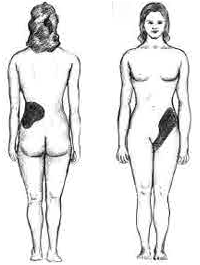Kidney stone disease
formation of mineral 'stones' in the urinary tract From Wikipedia, the free encyclopedia
Remove ads
Kidney stone disease, also known as nephrolithiasis or urolithiasis, is when a solid piece of material (kidney stones, also known as renal calculi) forms in the kidney or bladder. From there, most travel down the urinary tract.[1] Kidney stones typically form in the kidney and leave the body during urination.[1] A small stone may pass without causing symptoms (90% or more) within 3 months.[1] Kidney and bladder stones have been known to be fatal. A US founding father, Benjamin Franklin, had kidney stones.

The English used in this article or section may not be easy for everybody to understand. (August 2023) |
Remove ads
If a stone grows to more than 5 millimeters (0.2 in) it can cause blockage of the ureter resulting in severe pain in the lower back or abdomen.[1][3] A kidney stone 1cm or larger cannot pass on its own and requires surgery.
The medical name for kidney stone pain is renal colic. A stone may also result in blood in the urine, vomiting, or painful urination.[1] About 50% of people who get kidney stones will have another within 5 years, especially if they are under the age of 25.
Remove ads
References
Wikiwand - on
Seamless Wikipedia browsing. On steroids.
Remove ads

